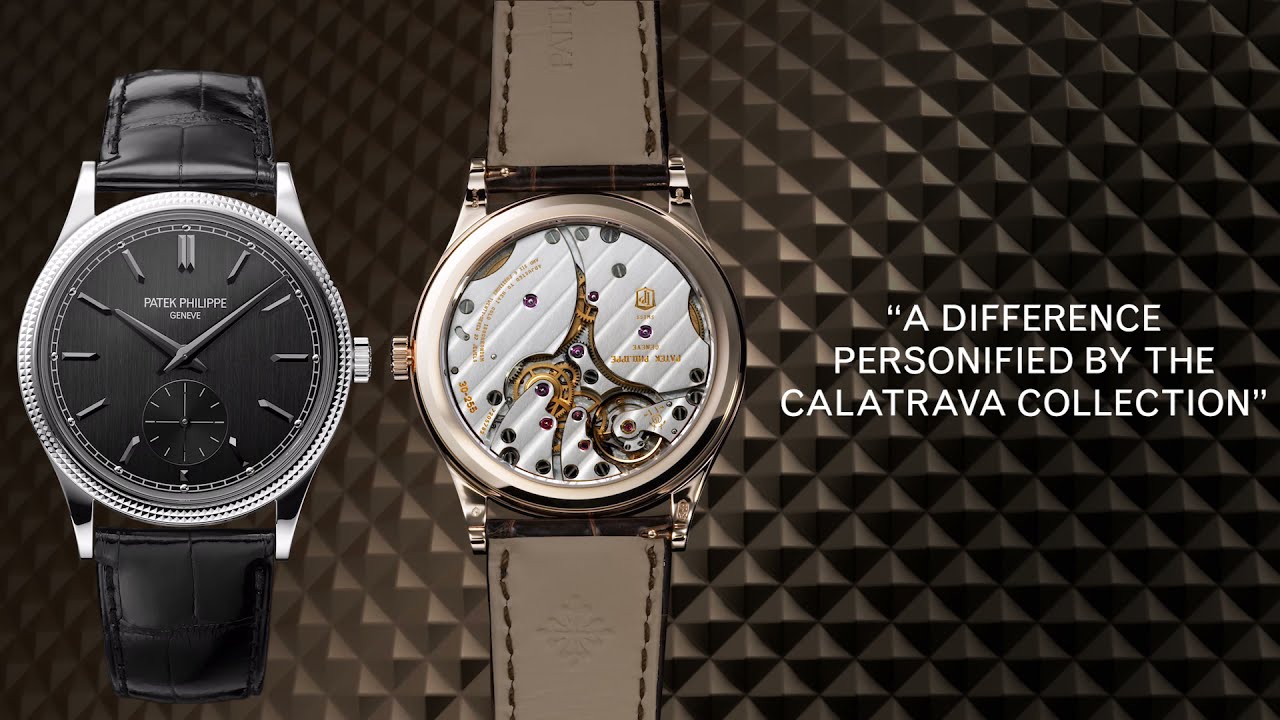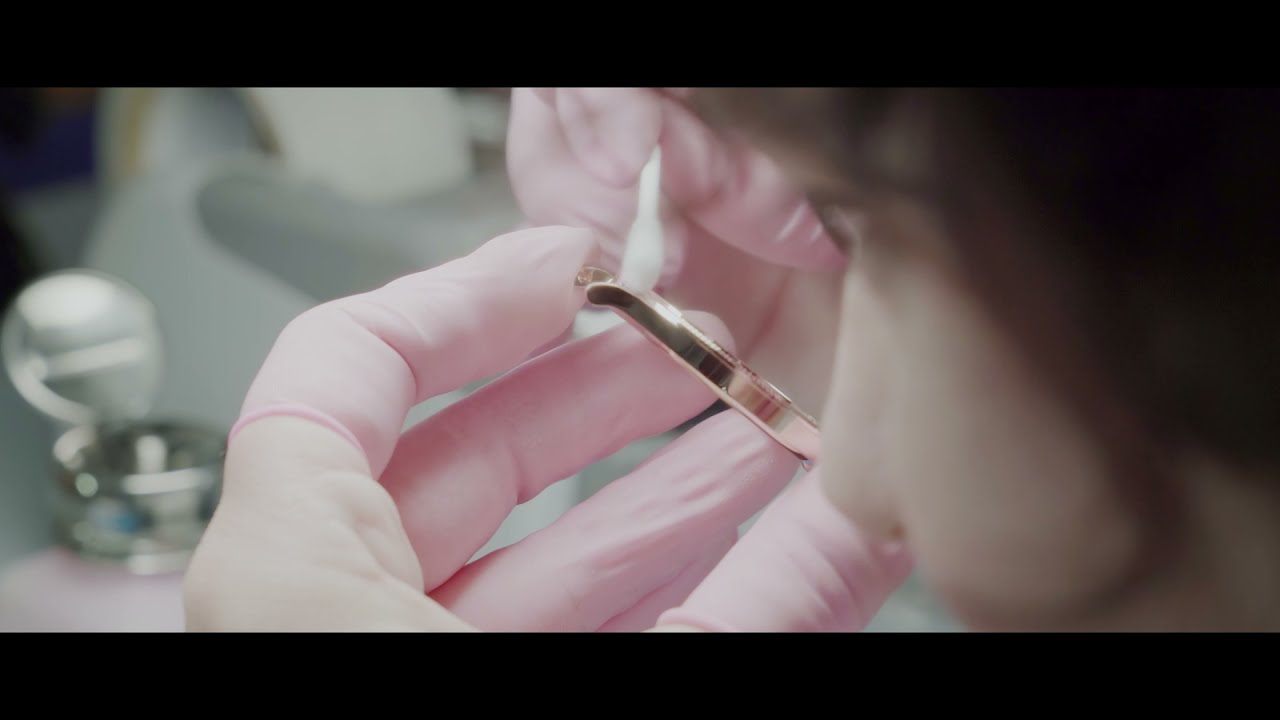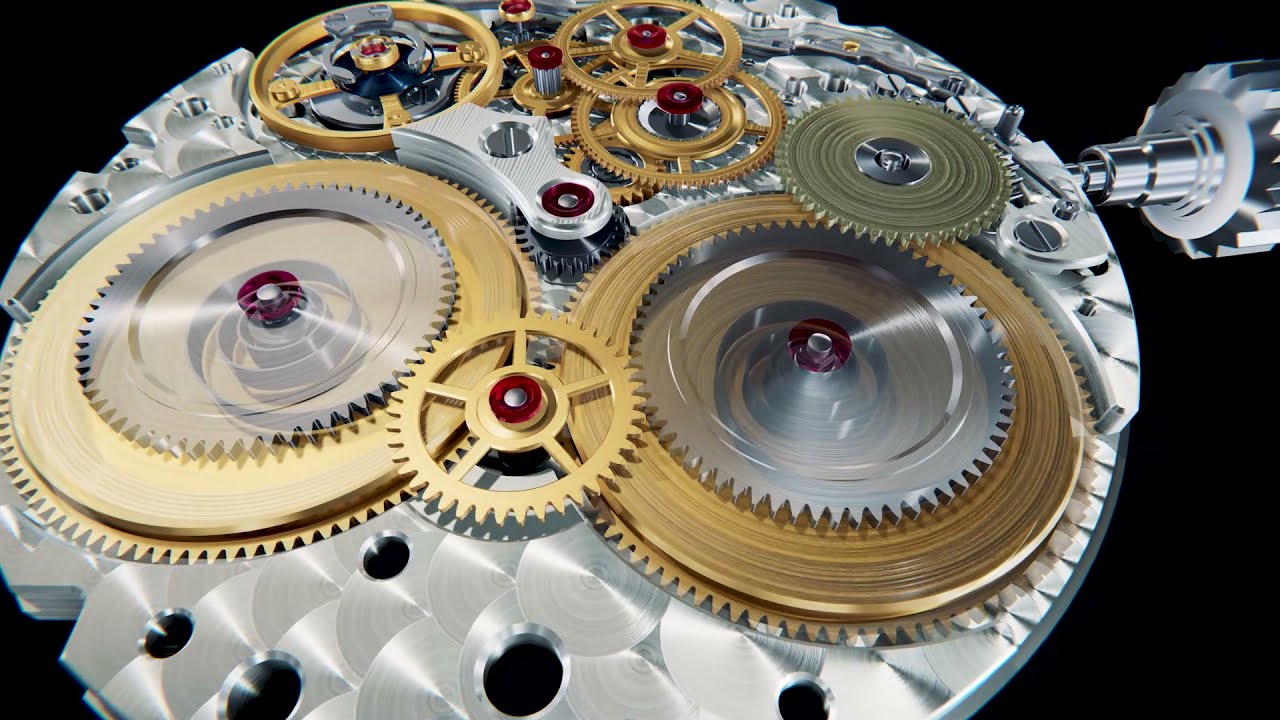Patek Philippe is launching a new grand complication with a perpetual calendar and an innovative, patented in-line display (Ref. 5236P-001). The famous Calatrava with the “Clous de Paris” bezel makes a strong comeback with a contemporary design and a new manually wound movement (Refs. 6119R-001 and 6119G-001). The patented Annual Calendar celebrates its first appearance in a round steel case with an integrated metal bracelet (Ref. 4947/1A-001). The Calatrava ladies’ model with a guilloched, blue lacquered dial has a slightly larger case and now accommodates a self-winding movement (Ref. 4997/200G-001). These new facets reflect Patek Philippe’s extensive know-how and enrich the very broad and continually updated collection in many segments that fulfill the expectations of women and men.

As the last independent, family-owned Genevan watchmaking company, Patek Philippe stands out with a rich range of watches for ladies and gentlemen. As a specialist for complicated timepieces (they make up nearly half of the current collection), the company has a leading position in watch design as evidenced by some of the most recent and important iconic models of our era – including designs such as the Calatrava or the Golden Ellipse. In the domain of casual elegance, Patek Philippe stands in the forefront with two models that have become genuine cult objects: the Nautilus and the Aquanaut. Today, the manufacture’s collection embraces about 140 different references that are produced in small series with a dozen watches to a few hundred pieces for which a broad selection of movements is available, all of them crafted in the company’s own workshops. Year after year, this collection is evolved in a conceptually balanced manner.

Patek Philippe Ref. 5236P-001 In-line Perpetual Calendar: a new, exclusive, and patented calendar display
The grand complications are the true domain of horological excellence. Patek Philippe is now enriching its broad range of calendar timepieces with a new perpetual calendar that shows the day, date, and month in a single panoramic aperture at 12 o’clock. This in-line display was already adopted in some of the manufacture’s pocket watches. But this was never done in a wristwatch, a veritable feat as regards the degree of miniaturization and the many technical challenges that had to be mastered.

To combine uniqueness with crisp legibility and high reliability, the designers developed a new self-winding ultra-thin movement: The caliber 31-260 PS QL with a recessed minirotor and a customized module for which three patent applications were filed. The in-line display system relies on four disks (of which two for the date) that are arranged on one level. It consists of 118 additional parts. It is complemented by two round apertures that show the leap-year cycle as well as the day/night indications. A further window displays the moon phases.

This extremely elaborate mechanism is premiering in a fully hand-polished platinum case with a diameter of 41.3 mm and a height of merely 11.07 mm. The blue dial with a black gradation to the periphery is adorned with a vertical satin finish. The course of time is displayed with applied hour markers and baton hands in white gold. The navy blue alligator leather strap is secured with a fold-over clasp and harmonizes perfectly with the dial.
The watch was presented in details here: Patek Philippe Ref. 5236P-001 In-line Perpetual Calendar
Patek Philippe Ref. 4947/1A-001 Annual Calendar: the very first version of this queen among useful complications with a round case in steel and a metal bracelet

One of the biggest successes of the manufacture in a totally new version. Patek Philippe invented the ingenious Annual Calendar mechanism that was patented in 1996. It requires only one manual correction per year and so far has been available in various ladies’ and men’s models in three gold colors and in platinum.

However, this useful and convenient complication has never come in a round Calatrava case in stainless steel. So far. With a polished bezel and a diameter of 38 mm that matches virtually every wrist, the new Ref. 4947/1A-001 also stands out with its new, totally integrated steel bracelet. It consists of five rows of fully polished links and is fitted with a patented fold-over clasp secured with four independent catches.

The light reflected by the polished steel harmonizes very elegantly with the night blue dial that with a horizontal and vertical satin finish evokes the beauty of Shantung silk. The course of time is tracked with applied Arabic numerals and leaf-shaped white-gold hands with luminous coatings.

The Annual Calendar displays are quickly and easily legible. Two subsidiary dials between 9 and 10 o’clock indicate the day and, between 2 and 3 o’clock, the month; the date appears in an aperture at 6 o’clock. The extremely precise moon-phase display rounds out the calendar functions.

The sapphire-crystal case back reveals the refined architecture and exquisite finissage of the self-winding caliber 324 S QA LU movement.
Patek PhilippeRef. 4997/200G-001 Calatrava ladies’ watch: with a slightly larger diameter and a self-winding movement

The fourth masterpiece of this spring quartet: the debut of a grand classic of feminine elegance. Launched in 2009, the Ref. 4897 Calatrava ladies’ watch with a guilloched and lacquered dial and the manually wound caliber 215 movement was available in various colors (brown, night blue, crème, silvery gray) and with a bezel set with brilliant-cut diamonds or baguette diamonds. Now, this icon is followed by a new version with a self-winding movement and a white-gold case with a slightly larger diameter of 35 mm instead of 33 mm. It leverages its seductive power within a feminine circle of customers who expect a combination of aesthetic refinement and the exclusivity and convenience of a mechanical movement that winds itself with every motion of the wrist.

The precious dial requires considerable work and artisanship. Its base is exquisitely guilloched with concentric waves and then coated with consecutive layers of a translucent night blue lacquer.

This decor creates fascinating depths above which the arrow-shaped white gold “poudré” hour markers and faceted Dauphine hands in white gold seem to float.

The bezel is set with 76 flawless Top Wesselton brilliant-cut diamonds (~0.52 ct.) and casts its light on the radiant decor of the dial.

The ultra-thin self-winding caliber 240 movement with a recessed minirotor in 22K gold offers the ideal basis for crafting exceptionally svelte cases with compact dimensions. The elegant architecture of the movement with its highly elaborate finissage and strict compliance with the criteria of the Patek Philippe Seal can be admired through the sapphire-crystal case back.

The suave personality of this new watch is emphasized by a new brushed, satin-finished calfskin strap. The shiny navy blue strap is secured with a white-gold prong buckle.
Patek Philippe Calatrava “Clous de Paris” Refs. 6119R-001 & 6119G-001 – A new design and a new movement for one of Patek Philippe’s most important classics
The famous Calatrava with the guilloched hobnail bezel is one of the most inimitable examples of the typical Patek Philippe style. It now comes in a new version with a decidedly contemporary look, a slightly larger diameter, and a dial with applied hour markers. This sleek, slender, and elegant men’s wristwatch in rose or white gold also has a totally new manually wound Patek Philippe movement with a power reserve of 65 hours.

Launched in 1932 as the Ref. 96 (the first model of the manufacture with a reference number), the Calatrava established itself as the quintessence of the classic round wristwatch. It is deemed by Patek Philippe to be one of the most beautiful manifestations of timeless elegance. Its puristic design reflects the minimalistic Bauhaus principle (function determines the form of an object). It has been repeatedly reinterpreted in numerous versions for ladies and men. They featured flat or slightly rounded bezels, smoothly polished, set with precious stones or guilloched. The models ranged from ultra-thin to impressive, with officer’s cases and sleek dials that showed merely the hours and minutes, sometimes also the seconds or further indications, gradually forming one of the manufacture’s most comprehensive collections.
A legendary model series
Within this proud tradition, some Calatrava models attracted considerable attention with lasting impressions: They were the versions with guilloched hobnail patterns on the bezels. This diamond-polished motif composed of small pyramid tips already appears on the bezel of a Calatrava in 1934, the Ref. 96D (D for décor). It has the same manually wound caliber 12-120 movement, the same curved lugs and the same dial with applied hour markers and small seconds as the Ref. 96. In 1972, this type of bezel also graces the manually wound Ref. 3520D (caliber 177), with hours and minutes, Roman numerals, and straight lugs. The year 1985 marks the debut of a Calatrava that would become one of the most famous timepieces in the world of horology. It was the legendary Ref. 3919 with the manually wound caliber 215 PS, subsidiary seconds at 6 o’clock, white dial with black lacquered Roman numerals and straight lugs. The model was produced for over 20 years. This period also saw versions with smaller diameters for feminine wrists, such as the Ref. 4819 (1987) with a quartz movement, the Ref. 4820 (1988) with a quartz movement and additionally with a gem-set bezel, as well as the Ref. 4809 (1991) with the manually wound caliber 16-250 movement. The Ref. 5115 (2000) with the manually wound caliber 215 PS reappears with the curved lugs inspired by the Ref. 96D. The Ref. 5120 with straight lugs and the self-winding caliber 240 movement debuted in 2001. With its slightly extended, finer Roman numerals and enlarged case (36 mm instead of 33.5 mm), the Ref. 5119 (2006) is a re-edition of the Ref. 3919, but retains the manually wound caliber 215 PS and the straight lugs. In 2009, it is complemented with the Ref. 5116 with a dial in grand feu enamel.

In 2016, a guilloched hobnail motif on the case flanks and one of the two dials of the Ref. 6300 Grandmaster Chime (Patek Philippe’s most complicated wristwatch) emphasized the significance of this decoration that is so typical for the manufacture. Since 2018, with the exception of some limited rare handcrafts editions (Ref. 5177), the “Clous de Paris” pattern has no longer appeared in Patek Philippe’s current collection. This is an ideal occasion to prepare its grand comeback.

A cult model with a reworked design
Patek Philippe has endowed this Calatrava “Clous de Paris” with fresh elan by updating its iconic design in a very contemporary manner. The new Ref. 6119 – the number pays tribute to the storied 3919 legend and the Ref. 5119 from 2006 – distinguishes itself mainly with the slightly larger diameter of 39 mm. It reflects the changing preferences of our era and emphasizes its presence on the wrist without compromising the slender elegance of its case.

A further design development: Black lacquered Roman numerals on a white background in the Refs. 3919 and 5119 have been replaced by applied faceted “obus” markers in 18K gold (with double markers at 12 o’clock). These markers emphasize the timelessly sleek aspect of the dial with its larger diameter. Thus, Patek Philippe has returned to the roots of the Calatrava design vocabulary and to the Refs. 96 (1932) and 96D (1934). They were endowed with the same type of hour markers. The gold dauphine-style hour and minute hands also recall the Ref. 96 but have three instead of two facets. They assure excellent legibility not least because of the railway-track minute scale at the periphery of the dial. The slender “cheveu”-style seconds hand rotates on the subsidiary subdial at 6 o’clock which is divided into four quarters.

The round bezel is decorated with a guilloched hobnail pattern and exhibits a slightly wider chamfered profile as well as a thin, polished fillet that frames the box-form sapphire crystal.

The shape of the strap lugs was reworked as well. The straight lugs of the Ref. 3919 are replaced with curved lugs inspired by the Ref. 96 and the self-winding Calatrava models from the 1990s. They create a perfect transition from the case to the strap, assuring a comfortable fit.

This new flagship of the Patek Philippe style is new masterpiece among the manufacture’s grand classics; it comes in two versions. The Ref. 6119R-001 combines a rose-gold case with a silvery grained dial as well as applied hour markers and hands in rose gold. It is worn on a shiny chocolate brown alligator strap with a rose-gold prong buckle. The Ref. 6119G-001 in white gold subtly plays with light on a charcoal gray dial with attractive contrasts – a vertical satin finish interrupted by the snailed subsidiary seconds dial. The applied hour markers and hands are made of the same metal as the case. This watch is worn on a shiny black alligator strap with a white-gold prong buckle. The characteristic shape of the prong buckles for both Ref. 6119 watches was originally designed explicitly for the American market by Henri Stern, the manufacture’s former president.

A totally new manually wound movement
With the introduction of a totally new manually wound movement, the Ref. 6119 Calatrava “Clous de Paris” establishes a new milestone in the history of Patek Philippe’s most famous timepiece collection. Its launch gives Patek Philippe the opportunity to present a brand new base movement that enriches the broad range of manufacture calibers. Its development is based on the desire to have a manually wound movement with a larger diameter than the caliber 215 PS. It allows the creation of exceptionally slender cases as a prerequisite for timeless elegance. The new caliber 30-255 PS has an inside case diameter of 30.4 mm (overall diameter 31 mm) as opposed to 21.5 mm for the 215 PS (overall diameter 21.9 mm) and an unchanged height of 2.55 mm as indicated by its designation. To preserve the height of 2.55 mm of the caliber 215 movement, the engineers and designers of the manufacture implemented several ingenious solutions, among them a central pinion without a wheel plate that meshes with the center wheel via an intermediate wheel as well as a ratchet wheel and a crown located beneath the barrel bridge instead of above it.

Energetically, the caliber 30-255 PS performs a jump forward as well. It is exceptionally robust and powerful, delivering a power reserve of 65 hours or nearly three days. A special feature of the movement is its two mainspring barrels in a parallel arrangement. They relax together and engage with the central pinion in a configuration that is rarely used. In contrast to barrels connected in series to extend the power reserve, parallel barrels increase the torque of the movement by adding the torque of the two barrels. This solution supports maximum force despite the slender architecture and allows the deployment of a balance with twice the moment of inertia of 10 mg/cm2. It is the highest moment of inertia of all of Patek Philippe’s 4-Hz movements. It improves rate stability and simplifies the precision adjustment of the movement. The frequency of 4 hertz (28,000 semi-oscillations/hour) pursues the same objectives. Of course, the caliber 30-255 PS – with a maximum deviation of -3/+2 seconds in 24 hours – fulfills the extremely strict directives of the Patek Philippe Seal as regards rate accuracy.

A stop seconds feature that blocks the balance when the crown is pulled makes it possible to set the time with one-second accuracy. When the crown is pushed home, the mechanism kick-starts the balance to set it in motion again.

Also, the architecture of the new base movement was carefully aligned with ancestral traditions, according to which each wheel or every function has its own bridge. Behind the sapphire-crystal case back, the caliber 30-255 PS thus reveals six elegantly shaped bridges that are finished to the most exacting horological traditions. This includes Geneva striping as well as chamfered and polished edges. The new manually wound movement harmoniously pairs aesthetics and performance. It celebrates its debut in the Calatrava Ref. 6119 which is off to a good start into a promising future in the Patek Philippe collections.























































